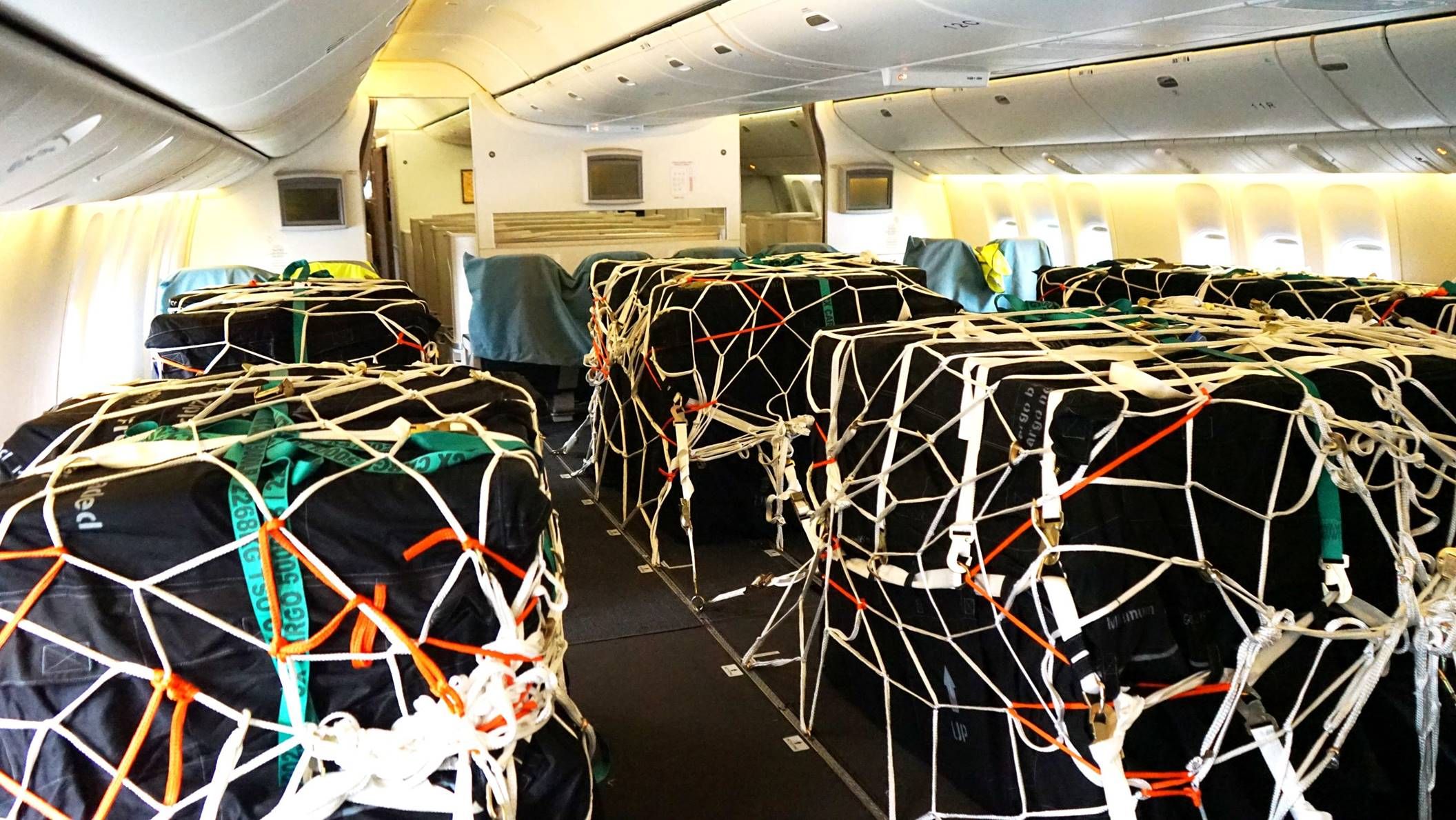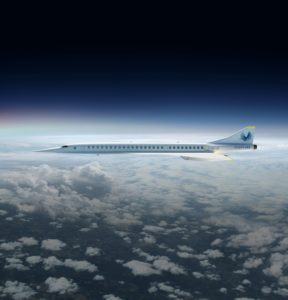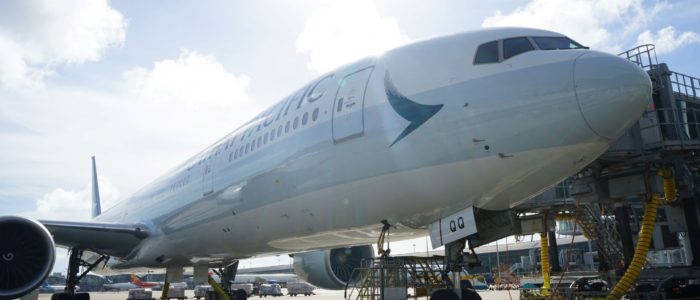
Airlines Retrofit Passenger Aircraft To Handle Cargo
Cathay Pacific supplements their cargo capacity and cuts some of their losses related to the pandemic by removing economy seats from Boeing 777 planes to transport more medical supplies, PPE and other critical shipments. They are required to keep the front and rear seat rows in place to protect the aircraft from cargo that could shift due to turbulence. Cargo is placed in fire-retardant bags because passenger cabins aren’t equipped with fire-suppression systems. The airline follows in the footsteps of Air Canada and Lufthansa who have reconfigured some passenger planes for cargo.
Read more about this trend at:
https://www.freightwaves.com/news/cathay-pacific-strips-seats-from-777-aircraft-for-cargo
(Image Credit: Cathay Pacific)
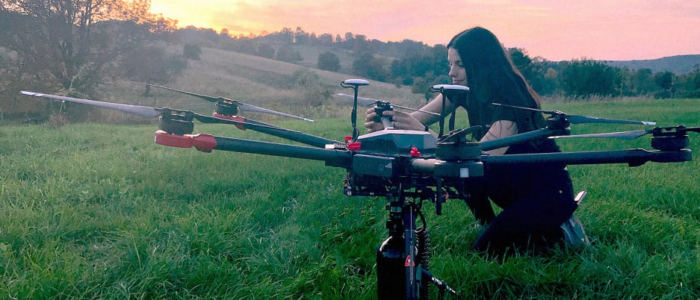
Startup Aims To Plant 1 Billion Trees By 2028 Using Drones That Transport And Plant Seed Pods
We are losing the oldest species on earth at the rate of 7 billion trees per year. Flash Forest came up with a drone technology that can transport and plant up to 20,000 seed pods per day and access sites that human planters cannot reach. The drones transport the pods and plant them faster and at a lower cost than humans with trucks and shovels. It won’t stop deforestation but it will slow climate change and narrow the gap in the race to restore the planet’s breathing mechanism.
Read more at:
(Photo credit: Flash Forest: One of Flash Forest’s prototype drones. )
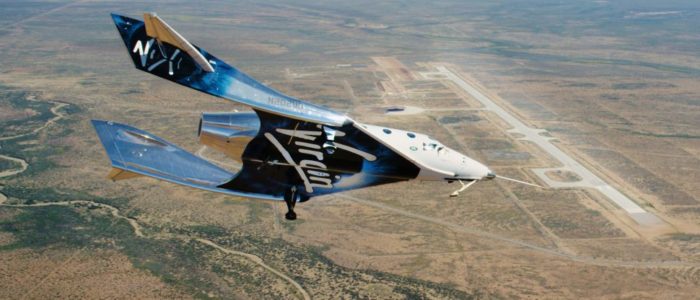
NASA And Virgin Galactic Join Forces To Advance Supersonic Travel
NASA has signed a space act agreement with Virgin Galactic and its subsidiary, The Spaceship Company, to develop high-Mach aircraft for potential use in the commercial aviation industry. The team will apply their combined know-how and advances in sub-orbital and space travel to explore new solutions for supersonic flight. The potential for a paradigm shift in high speed passenger and cargo transport is enormous.
Read more at:
https://www.space.com/virgin-galactic-nasa-superfast-flight.html
(Photo: Virgin Galactic’s VSS Unity performs its first glide flight over Spaceport America in New Mexico on May 1, 2020. Image: © Virgin Galactic)
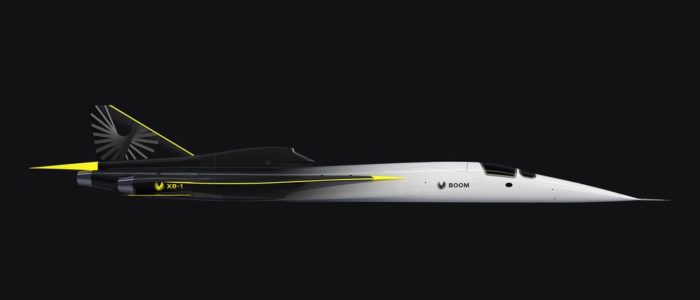
Boom Supersonic Will Test the XB-1 Supersonic Aircraft in a Military Zone in the Mojave Desert
Boom’s XB-1 is an experimental aircraft used in the development of Overture, a supersonic commercial aircraft with speeds exceeding Mach 2. The aircraft will be tested in protected military airspace, creating a supersonic corridor. This new breed of supersonic aircraft is expected to revolutionize the commercial aviation and cargo industry.
Read more at:
https://www.flyingmag.com/story/aircraft/boom-supersonic-xb1-mojave-test/
(Photo credits: Flying Magazine & Boom Supersonic)
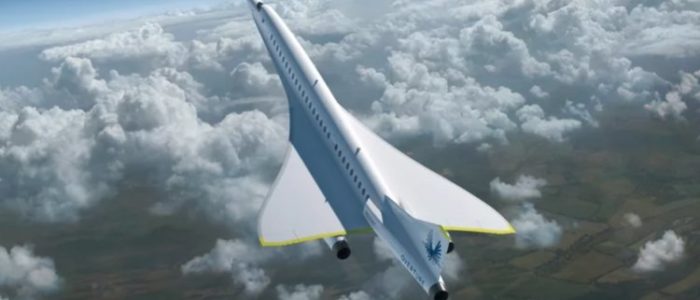
The Future Of Environmentally Sustainable Supersonic Air Travel And Time-Critical Air Freight Is At Our Doorstep
Boom Technology, a US-based supersonic transport startup, is developing a supersonic jet in partnership with Japan Airlines that will fly from NY to London in less than 3.5 hours. The new jet, named Overture, is expected to be in service for passenger flights as soon as 2025-2027. The reappearance of supersonic jets has the potential to transform the marketplace for time-critical air freight carriers and for courier giants such as Fedex and DHL, by reducing the transit time as well as the environmental impact of freighter aircraft. Boom Technology is exploring ways to improve on the Concord jet by using a new technology being developed by Prometheus, for producing aviation fuel which is converted from CO2 emissions in the atmosphere into liquid hydrocarbon and then transformed into aviation fuel. As a result of developments in propulsion technologies, the new jet is expected to fly at speeds in excess of Mach 2.2 without the use of afterburners, reducing the noise level and environmental damage associated with the first generation of supersonic aviation. Read more about this exciting development here.
